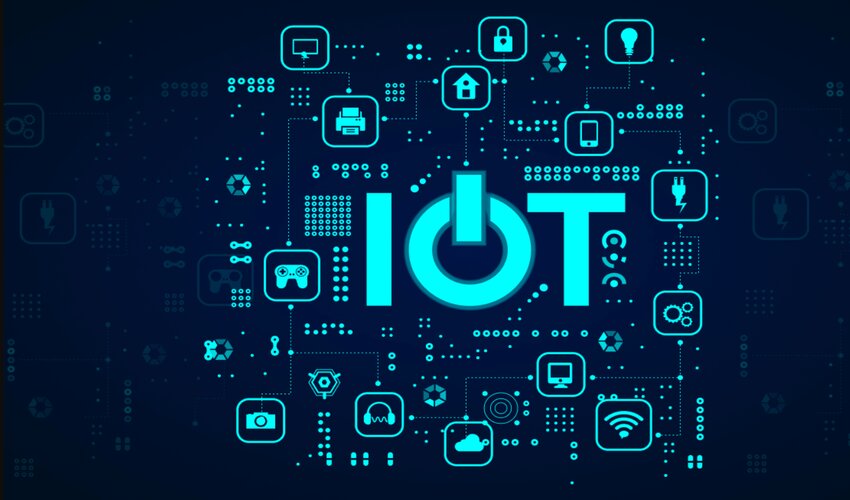
The Internet of Things (IoT) has revolutionized the way businesses operate, offering unprecedented connectivity and data-driven insights. As a consultant, your role in helping clients navigate this complex landscape is critical. Crafting a compelling IoT proposal requires a deep understanding of both the technology and the strategic framework that guides its implementation. Drawing inspiration from the structure of a McKinsey consulting proposal, this guide will help you build proposals that stand out, delivering connected solutions that resonate with the needs and goals of your clients.
Understanding IoT: The Backbone of Modern Business Solutions
Before diving into the intricacies of proposal writing, it’s essential to grasp the vast landscape of IoT. At its core, IoT is about connecting devices to the internet — from simple sensors to sophisticated industrial machines — enabling them to collect and exchange data. This interconnectedness paves the way for smarter business decisions, optimized operations, and innovative services.
The Impact of IoT Across Industries
IoT’s influence spans various sectors, each with its unique applications and benefits. In manufacturing, IoT drives predictive maintenance, reducing downtime and extending equipment life. Retailers use IoT to enhance customer experiences through personalized interactions and inventory management. In healthcare, connected devices support remote monitoring and improve patient outcomes. Understanding these industry-specific applications is crucial when tailoring your consulting proposals to address the unique challenges and opportunities your clients face.
The Art of the Consulting Proposal: A Structured Approach
A well-structured proposal is the cornerstone of effective consulting. It communicates the value you bring to the table, outlines the scope of the project, and sets the stage for successful engagement. Let’s explore the key elements that form the backbone of a successful consulting proposal, inspired by the renowned McKinsey approach.
Executive Summary: Capturing Attention and Interest
The executive summary is your opening act, the hook that grabs your client’s attention. It should succinctly present the problem, your proposed solution, and the benefits the client will reap. This section must resonate with the client’s needs, demonstrating your understanding of their business and the IoT landscape. It’s not just about introducing the project; it’s about framing it as an indispensable step towards their strategic objectives.
Crafting a Winning IoT Proposal: Key Considerations
When building a proposal for IoT solutions, there are several key considerations to keep in mind. These will not only ensure that your proposal is comprehensive but also that it speaks the language of decision-makers who are looking for tangible business outcomes.
Aligning IoT Solutions with Business Objectives
The first step in crafting your proposal is to align IoT solutions with the client’s business objectives. This means going beyond the technical features of IoT and focusing on how it can solve specific business problems, improve efficiency, or create new revenue streams. Your proposal should articulate a clear connection between IoT capabilities and the client’s strategic goals.
Risk Assessment and Mitigation Strategies
IoT implementations come with their share of risks, from data security to integration challenges. A robust consulting proposal addresses these concerns head-on, presenting a thorough risk assessment and proposing mitigation strategies. This not only demonstrates your due diligence but also builds trust with your client by showing that you are prepared to manage potential obstacles.
Cost-Benefit Analysis: Demonstrating ROI
A compelling proposal must include a detailed cost-benefit analysis, showcasing the return on investment (ROI) of the IoT solution. This section should break down the costs involved in implementing the IoT project and the expected financial and operational benefits. Use data and case studies to back up your claims, making the ROI clear and convincing.
Project Methodology: The Blueprint for Success
The methodology section of your proposal is where you outline the ‘how’ of your project. This is where you detail the steps you will take to achieve the objectives laid out in the executive summary and align them with the client’s business goals.
Defining the IoT Ecosystem
Begin by defining the IoT ecosystem that will be central to your solution. This includes the devices, networks, platforms, and analytics that will work together to create value. It’s important to explain how each component fits into the overall strategy and the role it plays in achieving the desired outcomes.
Customizing the Approach
No two IoT solutions are the same, and your methodology should reflect the customization of your approach. Whether it’s a phased rollout or an agile development cycle, the proposal should detail the project management approach, stakeholder engagement, and the iterative processes that will be used to refine the solution.
Integration and Implementation
Detail how the IoT solution will integrate with existing systems and processes. This section should address potential technical and operational challenges and how they will be overcome. It’s also important to outline the implementation phases, providing a clear roadmap from concept to completion.
Timeline and Milestones: Charting the Course
A clear timeline is essential for setting expectations and ensuring project accountability. This section should outline the major milestones and the estimated time to achieve them.
Setting Realistic Expectations
Be realistic about the timeframes you present. IoT projects can be complex, and it’s important to factor in time for testing, feedback, and unforeseen challenges. A well-thought-out timeline demonstrates your understanding of the project’s scope and complexity.
Milestones as Progress Indicators
Identify key milestones that will serve as indicators of progress. These could include the completion of the initial assessment, the end of the pilot phase, or the full-scale rollout of the IoT solution. Make sure these milestones are specific, measurable, and tied to the project’s success criteria.
Deliverables: Tangible Outcomes and Documentation
The deliverables section is where you specify what the client will receive at the end of the project. This goes beyond the IoT solution itself and includes documentation, training, and support.
Clear and Concise Deliverables
Each deliverable should be clearly defined, with a description of what it entails and its relevance to the project’s objectives. Whether it’s a custom-built dashboard for real-time analytics or a comprehensive post-implementation support plan, the deliverables should reflect the value you are providing.
Documentation and Training
Include documentation and training as part of your deliverables. This ensures that the client and their staff are well-equipped to use and maintain the IoT solution after the project is completed. It also serves as a reference point for future projects and scalability.
Budget and Investment: The Financial Framework
A detailed budget is a critical component of your consulting proposal. It provides transparency and helps justify the investment in the IoT solution.
Itemized Budget
Provide an itemized budget that breaks down the costs associated with each aspect of the project. This should include hardware, software, labor, and any other expenses. Be transparent about your pricing and the value you deliver.
Investment Justification
Use this section to reinforce the ROI discussed earlier. Highlight how the investment in IoT will lead to cost savings, efficiency gains, or revenue growth. Back up your claims with data, projections, and case studies where possible.
Risk Management: Anticipating Challenges
Risk management is a crucial aspect of any proposal. It shows that you are proactive and have considered potential pitfalls.
Identifying Potential Risks
Identify potential risks associated with the IoT project, including technical, operational, and security risks. Be specific and demonstrate that you have a deep understanding of the challenges that could arise.
Mitigation Strategies
For each risk identified, provide a mitigation strategy. This could include contingency plans, insurance, or specific security protocols. It reassures the client that you are well-prepared to handle any issues.
Conclusion: Bringing It All Together
In conclusion, a well-crafted consulting proposal for IoT solutions is a comprehensive document that demonstrates your expertise, understanding of the client’s needs, and the value you will deliver. It should be clear, concise, and compelling, with a focus on tangible outcomes and strategic alignment with business objectives.
By following the structured approach inspired by the McKinsey consulting proposal, you can create proposals that not only address the technical aspects of IoT but also resonate with the strategic vision of your clients. Remember to emphasize the transformative potential of IoT, the strategic alignment with business goals, and the robust methodology that will guide the project to success.
In crafting your proposal, always aim to be the bridge that connects the promise of technology with the realities of business performance. With this guide, you are well on your way to becoming a trusted advisor in the IoT space, helping clients navigate the complexities of connected solutions and driving forward the future of business innovation.

Aimee Garcia is a Marketing Consultant and Technical Writer at DailyTechTime. She has 5+ years of experience in Digital Marketing. She has worked with different IT companies.

